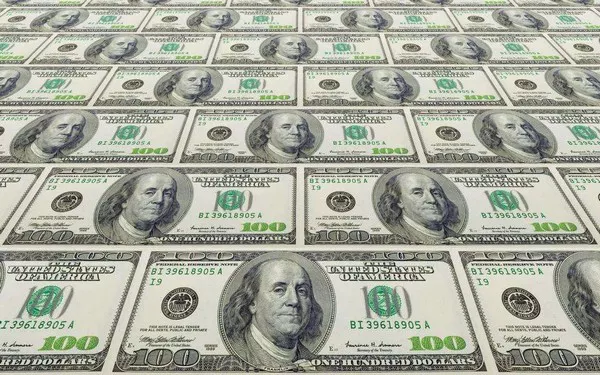Understanding the current exchange rate between the US Dollar (USD) and the Australian Dollar (AUD) is crucial for anyone involved in international transactions, travel, or investment. This article will provide the latest exchange rate information and help you convert $59 USD to AUD, while also delving into the factors that influence currency fluctuations and the potential impact on your financial decisions.
Determining the Current Exchange Rate
As of the latest data available, the current exchange rate is 1 USD = 1.53 AUD. This means that for every US dollar, you can exchange it for approximately 1.53 Australian dollars.
Converting $59 USD to AUD
Using the current exchange rate, we can calculate the value of $59 USD in AUD:
$59 USD x 1.53 AUD/USD = $90.16 AUD (approximately)
Therefore, $59 USD is equivalent to approximately $90.16 AUD.
Important Note: Exchange rates fluctuate constantly, and the rate provided here is a snapshot in time. It is always advisable to check the latest rates before making any transactions.
Factors Influencing Currency Fluctuations
Several factors can influence the USD/AUD exchange rate, including:
Interest Rates: Higher interest rates in a country tend to attract foreign investment, increasing the demand for that country’s currency and causing its value to appreciate.
Economic Performance: A strong economy with robust growth and low unemployment can boost the value of a currency. Conversely, economic downturns can lead to depreciation.
Political Stability: Political instability and uncertainty can negatively impact investor confidence, leading to currency depreciation.
Global Events: Major global events, such as economic crises or geopolitical tensions, can cause significant fluctuations in currency exchange rates.
Market Sentiment: Overall market sentiment and risk appetite can also influence currency valuations.
Impact of Exchange Rate Fluctuations
Fluctuations in exchange rates can have a significant impact on various aspects of life and business:
Travel: When traveling to a country with a different currency, exchange rate fluctuations can affect the cost of your trip. A stronger AUD means your USD will buy less, potentially increasing your travel expenses.
International Trade: Businesses engaged in international trade are directly impacted by exchange rate movements. A stronger AUD can make Australian exports more expensive for foreign buyers, while imports become cheaper.
Investment: Investors with international investments need to consider exchange rate fluctuations, as they can affect the value of their holdings.
Managing Exchange Rate Risk
Individuals and businesses can employ various strategies to manage exchange rate risk:
Forward Contracts: These contracts allow you to lock in an exchange rate for a future transaction, providing certainty and mitigating risk.
Currency Options: Options provide the right, but not the obligation, to buy or sell a currency at a predetermined rate, offering flexibility in managing exchange rate risk.
Diversification: Diversifying investments across different currencies can help spread risk and reduce the impact of fluctuations in any single currency.
Beyond the Basics: A Deeper Look at USD/AUD Dynamics
The USD/AUD exchange rate is influenced by a complex interplay of economic, political, and social factors. Here are some additional considerations:
Commodity Prices: Australia is a major exporter of commodities such as iron ore and coal. Fluctuations in commodity prices can significantly impact the AUD’s value.
See Also:Current USD Exchange Rate: What Is 800 Dollars in Pounds?
Trade Flows: The balance of trade between the US and Australia can also affect the exchange rate. If Australia exports more to the US than it imports, the AUD will tend to strengthen.
Central Bank Policies: The monetary policies of the US Federal Reserve and the Reserve Bank of Australia can influence the USD/AUD exchange rate. For example, if the Fed raises interest rates while the RBA keeps them steady, the USD may appreciate relative to the AUD.
Geopolitical Risks: Global events such as trade wars, political conflicts, and natural disasters can create uncertainty and volatility in currency markets, impacting the USD/AUD exchange rate.
Staying Informed and Making Informed Decisions
Staying up-to-date on the latest economic news and developments can help you better understand the factors influencing the USD/AUD exchange rate. This knowledge can be invaluable when making decisions about international travel, investments, or business transactions.
Several resources are available to help you stay informed, including:
Financial news websites and publications: These sources provide regular updates on currency exchange rates and economic news that can impact currency valuations.
Central bank websites: The Federal Reserve and the Reserve Bank of Australia publish information about their monetary policies and economic outlook.
Currency exchange rate websites and apps: These tools allow you to track exchange rates in real-time and access historical data.
By staying informed and understanding the factors influencing the USD/AUD exchange rate, you can make more informed decisions and manage your financial risks effectively.
Conclusion
Understanding the current USD/AUD exchange rate and the factors that influence its fluctuations is essential for making informed financial decisions. By staying informed and employing appropriate risk management strategies, individuals and businesses can navigate the dynamic world of currency exchange and achieve their financial goals.
Remember, the exchange rate provided in this article is a snapshot in time and may have changed since publication. Always check the latest rates before making any transactions.
Related Topics:
Current USD Exchange Rate: What Is $100 USD in AUD?
Current USD Exchange Rate: What is $109 us in Australian dollars?
Current USD Exchange Rate: What is 500 USD to Japanese Yen?


























